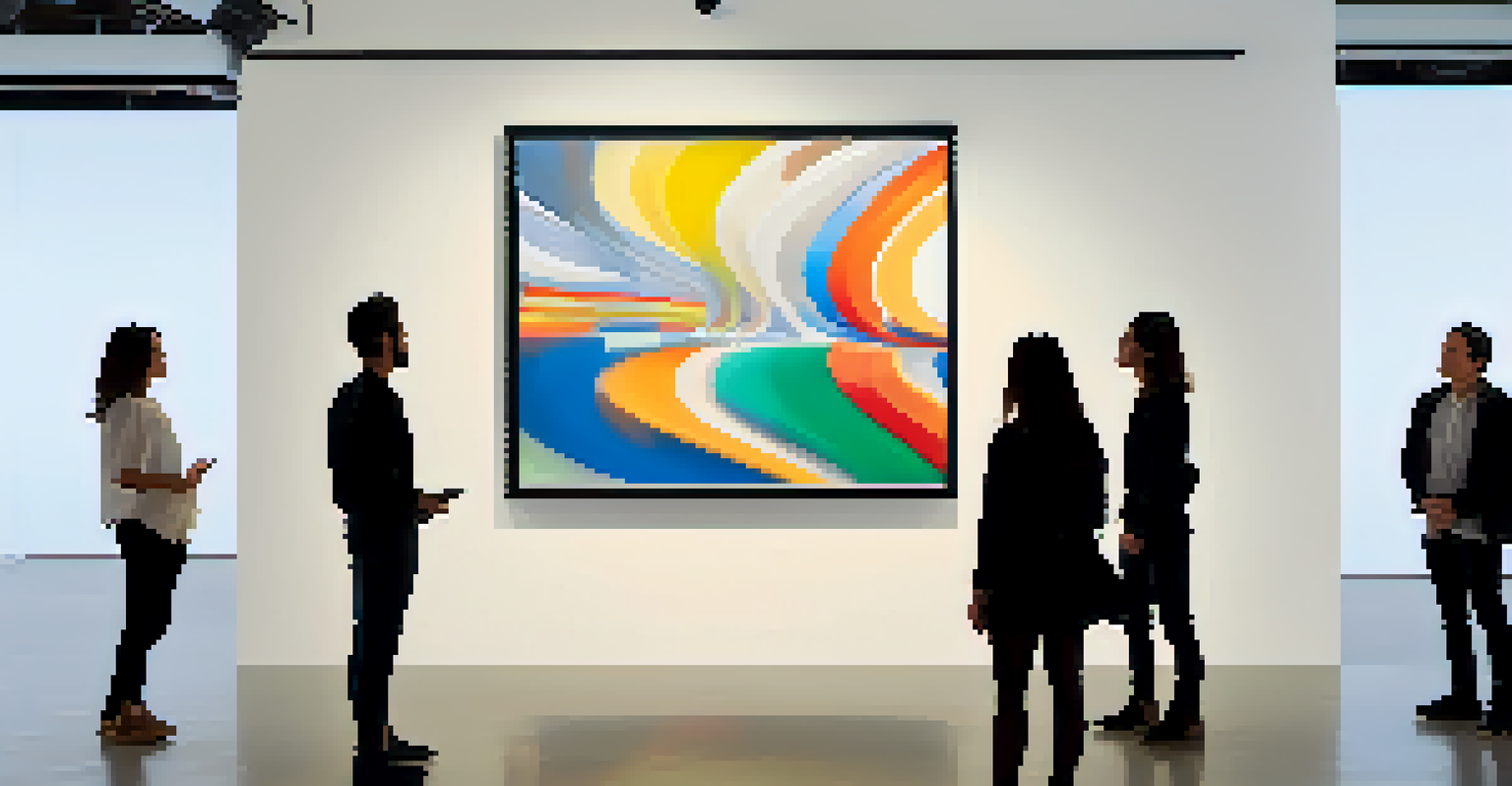Generative Music: Crafting Unique Sounds with AI Algorithms

What is Generative Music and Why It Matters
Generative music is a fascinating approach to sound creation, where algorithms play a crucial role. Instead of traditional composing methods, it uses AI to produce music dynamically, making each listening experience unique. This innovative method signifies a shift in how we understand and interact with music, blending art with technology.
The future belongs to those who believe in the beauty of their dreams.
At its core, generative music allows for endless variations of sound, which can be particularly appealing in an age where personalization is key. Imagine listening to a piece that evolves and changes based on your mood or the environment around you. This adaptability not only enhances the listening experience but also opens up new avenues for artists and listeners alike.
Moreover, generative music democratizes music creation, enabling individuals without formal training to produce compelling works. With user-friendly tools powered by AI, anyone can experiment and compose, making music more accessible than ever before.
The Role of AI Algorithms in Music Creation
AI algorithms serve as the backbone of generative music, analyzing vast amounts of data to create new sounds. These algorithms can learn from existing compositions to understand patterns, structures, and styles, ultimately generating music that resonates with listeners. It’s like having a virtual composer that’s constantly learning and evolving.

One popular method is using neural networks, which mimic the way the human brain processes information. For instance, a neural network can be trained on thousands of songs from various genres, allowing it to produce original pieces that reflect those influences. This technique showcases how AI can enhance creativity rather than replace it.
Generative Music Revolutionizes Sound
Generative music uses AI algorithms to create unique, dynamic compositions that adapt to listeners' experiences.
Additionally, AI can introduce randomness and unpredictability into the creative process, resulting in compositions that surprise even the artist. This element of chance can lead to innovative soundscapes that challenge traditional music norms, encouraging both musicians and listeners to embrace the unexpected.
Tools for Generative Music Production
There are several tools available today that empower musicians to delve into generative music. Software like Ableton Live, Max/MSP, and Sonic Pi provide platforms for artists to experiment with AI algorithms and create unique sounds. These tools offer a user-friendly interface, making it easier for anyone to get started with generative music.
Creativity is intelligence having fun.
For example, platforms like OpenAI's MuseNet can generate original compositions in various styles by inputting a simple prompt. Users can specify genres or even particular instruments, leading to exciting and fresh musical pieces. Such tools invite experimentation, allowing musicians to push boundaries and explore new creative possibilities.
Moreover, some applications even allow real-time interaction with the music, where users can influence the sound live during performances. This not only enhances the experience for the audience but also allows artists to engage in a dynamic creative process, making each performance a truly unique event.
Generative Music in Live Performances
Generative music is making waves in live performances, transforming how audiences experience music. Artists are now using algorithms to compose soundscapes that react to the atmosphere and energy of a venue. This interactivity creates a more immersive experience, as the audience feels a part of the music-making process.
Imagine attending a concert where the music shifts and adapts based on the crowd's energy. This level of interaction not only keeps the audience engaged but also allows musicians to explore creativity in real-time, leading to spontaneous and unforgettable performances. It’s a beautiful blend of technology and artistry.
AI Enhances Creative Possibilities
AI algorithms analyze data to produce original music, allowing for innovative compositions that challenge traditional norms.
Additionally, generative music can enhance visual elements in live shows, creating a multisensory experience. By synchronizing visuals with the evolving sounds, artists can captivate their audience on multiple levels, making concerts not just a listening event but a full-on sensory journey.
The Intersection of Generative Music and Art
Generative music isn't just about sound; it often intersects with visual art, creating a harmonious blend of both forms. Artists are utilizing algorithms to generate not only music but also visuals that respond to the sounds being produced. This synergy can lead to mesmerizing installations and performances that stimulate all the senses.
For instance, installations that combine generative visuals with music can create environments where viewers feel enveloped in the art. As the music evolves, so do the visuals, leading to a unique experience that changes with every moment. This dynamic relationship encourages collaboration between musicians and visual artists, fostering innovation.
Moreover, this fusion of sound and sight can extend to video games and virtual reality, where generative music enhances gameplay and immersion. As players interact with the game, the music shifts, creating a tailored experience that reflects their actions and choices, adding depth to the storytelling.
The Future of Generative Music
The future of generative music looks bright as technology continues to advance. With improvements in AI and machine learning, we can expect even more sophisticated algorithms that can create increasingly complex and emotive compositions. This evolution could lead to new genres and styles of music that we have yet to imagine.
Additionally, as generative music tools become more accessible, we might see a surge of indie artists exploring this medium. This democratization could usher in a wave of fresh creativity, where diverse voices and perspectives shape the musical landscape. It’s an exciting time for both musicians and music lovers alike.
Ethics and Ownership in Music Creation
Generative music raises important ethical questions about ownership and the potential impact of AI on human creativity.
Furthermore, the integration of generative music into our daily lives is likely to expand. From personalized playlists that adapt to our moods to soundscapes that enhance productivity, AI-generated music could seamlessly weave into various aspects of our lives, enriching our experiences.
Challenges and Ethical Considerations in Generative Music
While generative music offers fantastic opportunities, it also presents challenges and ethical considerations. One significant concern is the ownership of AI-generated music. If a computer produces a song, who holds the rights? This question is vital as the line between human creativity and machine-generated content becomes increasingly blurred.
Moreover, there’s the risk of over-reliance on algorithms, potentially stifling human creativity. If artists lean too heavily on AI to create music, they might miss out on the emotional depth and personal touch that comes from traditional songwriting. Striking a balance between using technology and preserving the essence of human artistry is crucial.

Lastly, we must consider the implications of using AI in music production from a cultural perspective. Music is deeply rooted in human experience and emotion, and while AI can mimic and create, it lacks the lived experiences that inform our understanding of music. Ensuring that generative music respects and honors cultural contexts is vital for its responsible development.